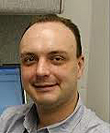The MEFANET 2011 conference will include attractive plenary sessions including invited speakers' lectures.
Plenary session invited speakers |
Assoc. prof. Radu Iliescu M.D., Ph.D., FAHA
University of Medicine and Pharmacy, Romania; University of Mississippi Medical Center, US Associate Professor of Physiology Dr. Radu Iliescu received his M.D. from the University of Medicine and Pharmacy “Gr. T. Popa” Iasi, Romania and his Ph.D. in Pharmacology from the Max Delbruck Center in Berlin, Germany and the University of Medicine and Pharmacy “Gr. T. Popa”. He was a postdoctoral fellow in the Department of Physiology and Biophysics at the University of Mississippi Medical Center in Jackson, MS and then became Assistant Professor of Physiology. His areas of interests are the neural regulation of blood pressure and kidney function and applies mathematical modeling of integrative physiology to his studies. He has published over 35 peer reviewed manuscripts in this field and his research was constantly funded by European and US research organizations. topic: HumMod – integrated multilevel mathematical modeling of physiology for research and educationMultilevel, integrated mathematical modeling of physiology allows examination of a multitude of variables which may not be amenable to direct experimental testing or measurement. We have developed HumMod, a model composed of~ 4,500 equations describing human physiology, which includes cardiovascular, neural, renal, endocrine, metabolic, and respiratory physiology. Variables are described by differential and / or algebraic equations and numerical solutions are computed simultaneously for increments of the independent variable, time. All variables and equations are organized in XML files, which can be opened by any text editor and are directly readable and interpretable by users as the local names are self-descriptive. The model structure is parsed, equations are solved and results are displayed graphically by a compiled executable file. In addition, by way of XML files, users can add or modify existing content (variables and relationships), making HumMod a user-friendly, interactive modeling platform. The major advantage of the HumMod, besides its complexity, is that it allows evaluation of dynamic changes in physiological variables in response to perturbations. Such an approach is currently used for conveying complex physiological processes in medical education and also for research hypothesis generation and testing. We present mathematical simulations using HumMod describing normal and pathophysiological behaviors in both steady state and dynamic conditions. |
Prof. Stephen Randall Thomas, Ph.D.
Institut Gustave-Roussy, France S. Randall Thomas is a workpackage leader in the Virtual Physiological Human Network of Excellence (FP7) and was a partner in the STEP Roadmap project (FP6). He is international coordinator of the Renal Physiome He received his M.A. in Biology in 1973 (Swarthmore College), a Ph.D. in Physiology in 1977 (Medical College of Virginia, Richmond), and the HDR from Univ. Paris 5 in 1990. After postdocs at the French Atomic Energy Commission (Biology Dept.) at Saclay (1979) and in the Dept. of Physiology at Univ. Texas Med. Center, Houston (1980-81), he became Chargé de Recherche with the CNRS, France, in 1982, where he is now a Director of Research. He currently works at IR4M UMR8081 CNRS & Univ. Paris-Sud at Orsay and Villejuif. His research centers on mathematical modeling of integrated transport systems in renal and cardiovascular physiology and on the development of related databases and physiome infrastructure. He is on the Executive Board of the joint CNRS-INSERM Stic-Santé GdR (Groupement de Recherche) (was Director from 2007-2010), and is a founding member of the Institute of Theoretical Medicine (Lyon). He is on the editorial board of the journals Frontiers in Computational Physiology and Medicine, Systems & Synthetic Biology, and is past member of editorial boards for Nephron Physiology, and Philosophical Transactions of the Royal Society A. He is also the Section Head Integrative Physiology/Homeostasis in the Faculty of 1000. topic: The Virtual Physiological Human (VPH) project, with focus on an integrated core model of blood pressure regulationEuropean Physiome activity is currently supported under the 7th Framework Program VPH call (Virtual Physiological Human)(Hunter et al. 2011), which has now funded one Network of Excellence (NoE) and more than thirty targeted projects. The mission of the NoE is to coordinate these efforts, explore training possibilities, disseminate information about VPH resources and projects, and furnish a VPH ToolKit. The aim of the VPH ToolKit is to foster interoperability among the plethora of models at different scales through the use of markup languages, shared reference ontologies, model repositories, databases, and so on. I will briefly summarize this activity and then focus on progress in the Renal Physiome (Thomas 2009), which is linked to the VPH NoE through the SAPHIR Exemplar Project (Thomas et al. 2008) treating blood pressure regulation and renal physiology in a Guyton-inspired modular modeling environment (Guyton et al. 1972, 1987). Among other items, I will describe the Quantitative Kidney DataBase (QKDB) of experimental measurements and anatomical details relevant for kidney physiology, and preliminary results from an extensive sensitivity analysis of the Guyton models (Hernandez et al. 2011). |
assoc. prof. Jiří Kofránek, M.D., Ph.D.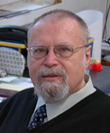
1. LF UK Jiří Kofránek is teamleader of interactive physiology atlas development. He is world well-known expert in human physiology modeling and simulations. Physiological simulations for preclinical medical educationWe present the current state of the technology used for web multimedia educational simulator development. The main aim is to provide novel interactive multimedia application that can be used for biomedical education where (a) simulations are combined with tutorials, and (b) the presentation layer is simplified while the complexity of the model is kept beneath. The development of the multimedia teaching simulators required the cooperation of many professionals including teachers, system analysts, artists, and programmers. During the design of the multimedia simulators, tools were developed that allow for component-based creation of simulation models, creation of interactive multimedia and their final coordination into a compact unit based on the given design. The result of our works is Atlas of physiology and pathophysiology as freely available online application, which can help to explain the function of individual physiological systems and the causes and symptoms of their disorders. |
Prof. Ivo Šlapák, M.D., Ph.D.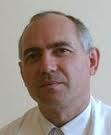
Faculty of Medicine, Masaryk University, Czech republic Ivo Šlapák is Professor at the Department of Paediatric Otorhinolaryngology, Faculty of Medicine, Masaryk University in Brno. topic: Extended teaching pediatrics - creation and use of electronic teaching materialsWith the support of the project CZ 1.07/2.2.00/15.0187 "Innovation of the study program of general medicine with extended teaching of pediatrics at the Medical Faculty of Masaryk." Abstract: Project of extended education in pediatrics at the Faculty of Medicine MU has been designed on the basis of experience with this field and with an effort to improve and increase range of courses for students of general medicine, who desire to specialize in pediatrics. Emphasis is given on a development of teaching materials available at FM MU’s special web page, including texts, images, videos, and other multimedia forms suitable for teaching. Project key activities:
|
Workshop invited speakers |
Mgr. Radek Policar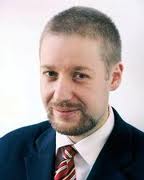
Masaryk Memorial Cancer Institute, Czech republic Workshop Copyright law in practiceRadek Policar had worked since 2004 at the Masaryk Memorial Cancer Institute, currently in the position of vice-director for law services and human resources. In his extensive lecture and publication activities he attempts to “translate” legislation documents and adjudications into a language understandable to health professionals. |
assoc. prof. Ivan Režňák, M.D., Ph.D.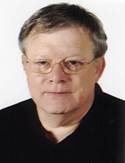
Jessenius Faculty of Medicine in Martin at the Comenius University in Bratislava, Slovakia Symposium E-assessmentIvan Režňák is head of the Nuclear medicine Departement UN and JLF UK in Martin. |
JUDr. Radim Charvát, Ph.D. LL.M.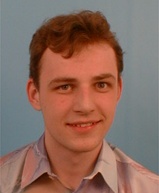
Masaryk university, Czech republic Workshop Copyright law in practiceRadim Charvát has worked since 2007 as an advocate with general practice focused particularly on intellectual property law, unfair competition law, and personal law including personal data protection. He is a member of the Appeal Committee at the Industrial Property Office in Prague. His lectures at the Masaryk University (both in Czech and English) concern topics on intellectual property protection within European countries and on international level. Radim Charvát is also a member of the European Communities Trademark Association (ECTA) and the International Trademark Association (INTA). In 2001 he was awarded MU rector’s prize for best students of this university. In 2002 he received scholarship from the World Intellectual Property Organization (WIPO) to study intellectual property law in the USA. |
